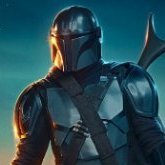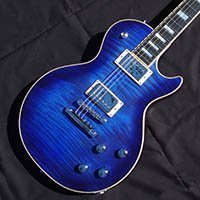Leaderboard
Popular Content
Showing content with the highest reputation on 10/13/2019 in all areas
-

HobbyBoss 1:32 Liberator GR Mk.VI - RAF Coastal Command
scvrobeson and 10 others reacted to Iain for a topic
Right - a little rough and ready - but formers placed in position on modified upper starboard wing. Hopefully these photos will illustrate the direction I'm heading in - and pleased to report that only the outer former needed any tweaking to fit from the shapes I'd drawn up. Note the modifications to moulded reinforcement sections in the wing - root to tip reinforcement webs left intact at present - except were I've had to cut channels for new formers. Front to rear reinforcements - inner half of wing almost completely removed apart from at the very leading edge (to give something solid for the initial bonding point) - outer half just the rear half of each web. The outer root to tip web on the upper wing section may need reducing in depth - and that on the lower half removing completely - details to be confirmed. Note - wing not bent/bonded around formers in the above photo! Now looking at mods needed to the outer sides of the undercarriage bay as this will need reshaping to match new wing profile in this area. Still thinking through kit main-spar to new former integration - need more coffee first... Yes - this has taken a long time to get to this stage - but now the profiles are done - modification to subsequent wings *should* be straightforward. We'll see! Iain11 points -

Bladder problems
zerosystem and 9 others reacted to Zactoman for a topic
That title though... Sorry, couldn't resist. I've received several requests to make replacement parts for the nasty rubber bladder parts included in the Trumpeter 1/32 F-14 Tomcat kit. The rubber parts are difficult to glue, difficult to paint and some have even had them weep oils that ruined their paint. As with rubber wheels, there is the fear that they will deteriorate and completely fail in time. While there are basically 3 positions for the wings, extended, swept and over-swept, I decided to only offer two, extended and swept. Those who want to do over-swept will have to do some filing and sanding. Here are the swept position parts: The bladders inflate using air pressure from the engines so there is some variability as to how much they inflate. I've found pics at cat-launch where they appear over-inflated while in others they have relaxed and the ribs in the under-structure show. I have made the (extended wing) bladders slightly relaxed to where the sub-structure barely shows. Those who want it to be more prominent can sand away material and those who want them more inflated can add material. Here are the extended wing parts: The stock kit has the wing glove sealing plate intersection with the forward section of the fuselage flush and have the rubber bladder notched to allow this. In reality the intersection should not be flush the full length, but flush at the front and raised at the rear. I made the bladders without the cut-out notch forcing the parts to fit properly. The parts in the previous pics are just sitting on the kit. Here you can see how they will look when everything is glued: Also note that the gap between the sealing pates and wing in the previous photos shows the parts just sitting on the kit with only a little tape holding things together. The gap will be tighter on a fully assembled kit (sorry, no pics to show this). The actual bladders are a Teflon coated canvas. They do get scuffed up and show wear. In some cases slight wrinkles show and in some pics it appears as though they have had large sections patched with slightly different colored canvas. Check your references for the plane you are building. I chose to make the bladders smooth and clean. You can add scuffing, wrinkles and patching if you choose or just (have fun and) replicate this and the weathering with paint. I will be pouring more production molds in the coming days and making some simple instruction sheets (the parts are drop-fit so there's not much to write about). I'm hoping to have these ready to release in the next week or two.10 points -
thank you my friends been away on business a bit so not much done, but I guess enough for an episode.. ..ailerons... lets take a look - see how there are both raised & indented rivets... there is also what looks like an overlapping panel at the forward half of the aileron (forward of teh trim tab) so I thought I would make a folded metal part with the raised rivets, and add the other panel on top with indented rivets.. ..I started by adding both sides of the drawing together to get what it would be if folded out flat and pinpricked where the raised rivets were - also scored the trim tab... ..then after turning it over and adding the raised rivets, i folded it and folded the leading edges to get the inner (and main) part of the aileron ..then I made and rivetted the overlapping panel, also folding down the leading edges.. ..a thick plastic card spar was then added and once I had made both ailerons, they were filled with Alec Tiranti expanding foam - this stuff goes rock hard and was actually a bit of ballache to clean out of the open end where the aileron meets the flaps.. ..with both done, I started removing the trim tabs - these were waste - I made new ones with raised rivets.. ..soon both were completed.. ..the exposed end seen because the flaps are down was detailed according to pictures & drawings.. ..and with two fixing rods fixed into the leading edges, they were mounted to the wings - I might live to regret this but the wingtip fairings after profiling to neatly fit the ailerons were getting really fragile and will break so hopefully this will protect them.. ..Flaps next - they are an interesting, if similar structure.. TTFN Peter8 points
-
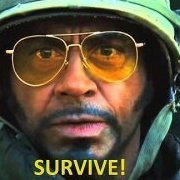
Tamiya 1/32 F4U-1 Birdcage Corsair - Done!
Starfighter and 5 others reacted to Brett M for a topic
Thank you both. Not sure how weathering the rear bulkhead will be, but I'm sure I'll add some chipped paint or scratches....somewhere. More minor updates for today. Unfortunately, I still haven't found the HGW seatbelts in the US. Does anyone have any suggestions on where to look? Seat assembled, some chipping added. I will probably take some of the Tamiya weathering pastels to add more wear through the paint where the seatbelts would rub against the seat. I decided not to do much else with the bands on the O2 tank, since it won't be very visible once the fuselage is closed up. And headrest....Tamiya calls for grey for the headrest mount. I haven't found a good picture that show's different. Any opinions here? As always, comments, critiques, "Brett, you've screwed up, change XXXX" are all welcome! Thanks for looking. Brett6 points -
Thanks Troy! Well we officially have a GBPB! (Great Big Pointy B@$*!d) This is going to be one TALL model display when done The wings are at this time, just push fit into the fuselage, but the fuselage is 85% complete, and the fit was surprisingly good. Its a loooooooooong model though! The fit of the cockpit was good all around, and the nose cone has really started making it look like a zipper now. I have blended the sections of the cockpit that had to wait until the fuselage was assembled, but now I still need to go back and add the photo etch details to the inside areas of the cockpit, then finish up painting those areas the cockpit color. After those are dry, I will mask them off and repaint the ODG on the instrument hoods: Even the area at the nose where 4 panels come together fit exceptionally well, and needed only mild sanding to bring the nose cone into alignment and smoothness with the other 3 panels: The only fit issue I experienced was on the rear spine panel on the port side. This was likely due to my own error in assembly, but has been dealt with using PPP and Mr Surfacer Black 1500: Ok guys, this was shot with my crappy cell camera, and of course with the lights off and with YouTube dumbing down the quality, its kind of a crap video, but you can get an idea of what the lights look like with the fuselage closed up. The top and bottom asynchronous flashing beacons will get a small piece of fiber optic cable cut to a size to sit in the small cut tube that the MLED sits in, so it will shoot light directly up into each beacon light that will get glued on top of the hole. These both will eventually get painted red. The only down side here is the exhaust really only shows up bright like this with the lights off. In most situations, I will likely be displaying the 104 in a lit contest or show type lighting. However, you can still see the exhaust light flickering and the color by changing the angle you look at it, and if you look more up inside the exhaust. The effect is just a bit more subtle with the lights on. The other lights, including the cockpit lights you can still readily see with the lights on. I'm going for a very clean (display/vignette wise) look, so I'm hoping the clear rod will clean up nicely, and I can cut it off at a desired angle later on the bottom of the base. Ill likely add some chrome paint or foil there on the bottom of the display/end of the clear tube to help bounce the light back through the clear rod. I will determine the length of the rod later when I know how much room I have to work with in my display cabinet. (I'm definitely going to have to raise my second to bottom shelf to accommodate the 104)6 points
-
In an effort to try and find a bit of MoJo... British rigging wires and terminals from RB Productions - these look ace and can't wait to give them a go: Talking of which - another addition to the WingNut Wings pile - and, yes, I've started one of the other Camels - hence the rigging wires! And, well, this was almost half price and, for some completely unkown reason, I couldn't resist! A complete diorama in a box - and amazing detail: Have fun... Iain5 points
-
Mistel Combo
Trak-Tor and 4 others reacted to Bruce_Crosby for a topic
Hi Guys, After a few days in the doldrums, I'm back on the Mistel. This time I'm making the braking parachute for the launch trolley. It's based on the photo of the chute on the much smaller trolley for the Ar-234A series but as this trolley is about twice the weight, I've increased the size somewhat. The photo I'm working from: Untitled by Bruce Crosby, on Flickr How its should turn out, assuming all goes well. Untitled by Bruce Crosby, on Flickr A start on the box, one of Tim Perry's 3D printed bits with a cover plate from sheet plastic, the start of the bulge shape from Tamiya white epoxy putty and the two large side opening flaps from Green Stuff epoxy putty which is much better to work for detail. Untitled by Bruce Crosby, on Flickr Then I added the small green triangles top and bottom at the centre join as these will be where the top and bottom straps locate. It will make sense in a while! Plus some brackets and rivets. Untitled by Bruce Crosby, on Flickr Rear Mounts added, odd bits drilled. Untitled by Bruce Crosby, on Flickr The top straps added. Untitled by Bruce Crosby, on Flickr As it stands right now. I still have to make four coil springs, two each side. Untitled by Bruce Crosby, on Flickr Untitled by Bruce Crosby, on Flickr Untitled by Bruce Crosby, on Flickr I hope this all makes sense! Regards, Bruce Crosby5 points -
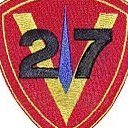
Revell FW 190A/F Cowling
mhorina and 4 others reacted to D.B. Andrus for a topic
I've made a supply of those fairings. They correct the shape and the lower panel line location for the Revell kit. Keep an eye on the Vendor's Board in the not too distant future.5 points -
Two really big boxes added to my stash: If I get the courage to tackle a lot of resin, the Junkers will be converted to a Ju 188F-1.5 points
-
FINISHED: 1/48 Hasegawa F-16A NSAWC 60
Anthony in NZ and 3 others reacted to Collin for a topic
OOB build. Wanted to try my hand at freehand airbrushing with the new AK paint line. Looks ok to me. Cheers Collin4 points -
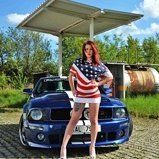
Duo F4U-1A Lt(jg) Tom Killefer & Lt Cdr. Tom Blackburn
TAG and 3 others reacted to Miloslav1956 for a topic
Today update.4 points -
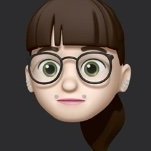
Tamiya 1/32 P-51D Mustang
coogrfan and 2 others reacted to curiouslysophie for a topic
I have recently finished my Ar 234 so now I fancied doing some Allied aircraft for a bit of a change. To start them off I thought I’d work on my first Tamiya kit, and it is a lovely kit! After the frustration of working on the Ar 234 and Fly’s lackadaisical sense of proper fit or instructions Tamiya’s kit is a dream. As always I’m not modelling a specific machine and I’m doing a fictional paint scheme. I am adding a lot of aftermarket to this one as well, including: Eduard’s Bid Ed set HGW belts and wooden floor CMK wheels (still not sure about these) Aires M2 .50 Cals Eduard ammo belts HGW wet transfers for markings and stencils Yahu control panel Barracuda seat, cockpit upgrade set, cockpit side walls, and placard decals. Ive never done a NMF before, so this should be a learning experience. Has anybody done one using MRP paints before? If so, any tips? I have been using a combination of Brett Green’s How To Build book and following Chuck540z3’s “kicked up a notch” build to help, along with a ton of internet reference photos. Without further delay here are the first pics, shots of the completed Packard Merlin; i added the various wiring and piping needed along the sides as well as the Eduard crank arms and scratch building ignition rails and wires. Sorry for the photo quality! Hope you enjoy the thread and I’ll post some more soon3 points -
Hi folks! I finally managed to paint the Elan13 figures to complement the wonderfull WNW Sopwith Camel. The WIP: It is OOB, except for the seat belt. Rigging was done with EZ Line and Prym knitting elastic. The grass mat is from Polak models. Here it is in all its glory: Cheers, Markus3 points
-
hello gentlemen, thanks for your support! In the mean time Revell is sending me a new canopy so I guess I will be having it in a few days. That has not kept me away from progressing with my build. Panels have been filled with white primer:3 points
-
So she's getting her coat of paint, all's coming along quite nicely. I usually freehand camouflage but since this one had a hard-edge finish I made masks out of Frisket film, worked a treat: A bit more to do in places but I needed to start thinking about exactly which plane I'm doing, within the 56 Squadron scenario. The standard Revell markings are for XF387 but because I'm not using their decals much I decided to do XF516, a Hunter which flew with several squadrons in its long life time, but which sadly ended up in the sea off the coast of North Wales whilst en route to a display in N Ireland - apparently one generator was duff when she took off and the other packed up shortly afterwards. The pilot ejected safely but was injured. So masks were drawn and cut: I even attempted the squadron's Firebird emblem: but after all my effort it was too small to use, being only 8mm from wingtip to wingtip! Interesting exercise though for future reference. On a different tack, I've cleaned up the G-Factor undercarriage legs in anticipation of getting her up on her pins! Hopefully I have a couple of days free for modelling this week so I should be able to crack on.3 points
-

Revell FW 190A/F Cowling
Mikester and 2 others reacted to thierry laurent for a topic
My question may look weird but why not getting the Hasegawa kit?3 points -
Nice shots Finn. I found the pronounced joint between the glass nose and the rest of the fuselage to be interesting. Almost looks like they sealed it with tape... Also, the first pic Finn posted showed a pretty evident taper of the nacelle. Now I'm not so sure about this issue....3 points
-

Make the others jealous
Dany Boy and 2 others reacted to BloorwestSiR for a topic
Got a really big box from HLJ on Friday. At 1/20 scale, it's definitely large scale: The manufacturer had fun with the outer box putting caution labels on each corner And inside the brown box was something I never thought I'd see. If you're wondering about the size of the box, here it is compared to a HB B-24 which isn't a small box in its own right. I'm going to need a lot of paint for this sucker. Carl3 points -

Tamiya 1/32 P-51D Mustang
Kilroy Was Here and 2 others reacted to curiouslysophie for a topic
One more post for today! I have managed to finish the cockpit and it’s side walls. The barracuda parts are fantastically detailed but a few of mine had some minor shrinkage. The cockpit placards and stencil decals are lovely and a great bit of detail. I thought they were writing but have a similar block letter style like the Eduard pre-painted parts. It may not be 100% accurate (mustang fans, please forgive me!) but I’m loving the detail! First the cockpit. The hgw belts are great as always. The barracuda seat is nice but not much more detailed than the kit part, though the backpad is much nicer. As is the mustang standard I did the work black showing wood underneath. The wood texture is the decals that came with the seatbelts. The barracuda battery and radio are definitely worth the money though! The gun sight has been left off till I put the armoured glass in later so I don’t break it off. The sidewalls are a wealth of wonderful detail, even oob, but with the barracuda resin and decals they get taken to a new level. I still need to semi matt coat them and add a little bit of weathering. The photos tend to show up little flaws that are either not visible to the naked eye, or will never be seen once finished. Hopefully tomorrow I can seal up the fuselage and get going on the wings and wheel bay. So much detail to add!3 points -

Tamiya 1/32 P-51D Mustang
coogrfan and 2 others reacted to curiouslysophie for a topic
I have been cracking on with the kit over the last couple of days and have a few more bits to show once they are nicely dry and weathered. For now though I have the oil tank and control panel to show. The yahu panel is lovely, since the photo below I have given it a semi gloss coat and a touch of gloss in the dials.3 points -
So..few models I treated myself with in the last few months....3 points
-
AIMS new products available now
Jan_G and 2 others reacted to Pastor John for a topic
Hi everyone - New LS products available now! Email me at aimsmodels1@gmail.com if interested, thanks. 32D017 Fw 190 A-8/R2 Sturmbock £5.50 32P015 Messerschmitt Bf-109G-2 conversion (designed to be used with Hasegawa and Revell kits)Bf-109G-6) £15.30 32P016 Messerschmitt Bf-109G-4 conversion (designed to be used with Hasegawa and Revell kits)Bf-109G-6) £12.60 32P017 Messerschmitt Bf-109G-4/R3 conversion (designed to be used with Hasegawa and Revell kits)Bf-109G-6) £15.303 points -

Hawker Fury, Hart and Demon
Alain Gadbois and one other reacted to mozart for a topic
I was the successful bidder on eBay yesterday morning for a Silver Wings Hawker Hart, a kit I have been hoping to buy for some considerable time - it will be a stable mate for the Demon that's already in the stash and will eventually form part of my "Hawker Heritage" line of kits (Hurricane, Typhoon, Tempest, Sea Fury, Hunter etc.). So as usual, even though I don't have the kit yet, I've started doing a bit of research as reference material, and came across a wonderful website which I felt some of you chaps might enjoy: https://vintageaviationecho.com/flying-the-hawker-fury/2 points -
Airfix 1/24 Hellcat
scvrobeson and one other reacted to Vynce804 for a topic
Hi All, the big airfix hellcat is finally finished! An enjoyable build of a really Great kit. No real issues just took some careful building and plenty of dry fitting before glueing in place. The blue was tricky to get any depth and variation and didn’t really like being worked with oils. I used a neutral wash for panel lines and as a filter. Resin wheels was the only after market and all markings are painted. cheers Matt2 points -
Howdy folks, I've just published my review of some replacement Lancaster wheels from Barracuda: Barracuda Studios BR32409: 1/32 Lancaster Main Wheels - Smooth Tire Thanks to Barracuda Studios for the review sample. Enjoy! Kev2 points
-
Model F-86D from Kitty Hawk scale 1:32. In terms of the model itself, I can write one I don't like KH models. In my opinion KH it is a desire to show on the box that there are many parts, so it makes to divide the hair into four. The plane itself is beautiful to me so this model could not be missing on my shelf. Model as always made straight from the box. F2 points
-
Make the others jealous
Uncarina and one other reacted to monthebiff for a topic
Definitely go for the 188 conversion as it's a lot of work but also a lot of fun!! Regards. Andy2 points -
2 points
-
1/32 F-16D Wolfpack "Aggressor"
Starfighter and one other reacted to Marcel111 for a topic
Here is my "D", which I finished in a huge hurry in order to enter into a competition. It's a little rough here and there and I won't be hurrying a build again. I am please with the result though, and even more pleased to move back to my F-14D now. Thanks for looking! Marcel2 points -

Revell 1/32 Me-262 in stock Spruebrothers
CATCplSlade and one other reacted to Radub for a topic
The "step" is caused by the tooling limitations. There has to be a minimum thickness of 0.3 mm at the trailing edge. Ideally the trailing edge of the slats should be sharp like a knife edge, but tooling limitations (and plastic flow limitations) preclude that. Incidentally, the same is the case with any trailing edge on any other kit out there, for example the slats on the Hasegawa 1/32 Bf 109. Radu2 points -
I think I may have been thinking A-20 in my head not A-262 points
-
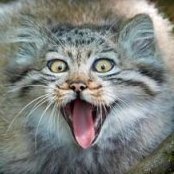
Trumpeter P-40N
Sabre F-86 and one other reacted to kalashnikov-47 for a topic
The name would be Safonov, not Safonova. Safonova is feminine.2 points -
Tamiya 1/32 P-51D Mustang
curiouslysophie and one other reacted to Kahunaminor for a topic
You are a machine Sophie! Great work in cracking time, well worth the visit! Regards, Kent2 points -
Got the Dogtooth leading edge extensions on, and they look okay to me. Also filled the notches further inboard on the wing leading edges. Next step will be scribing panel lines on them. Cheers2 points
-
Two new toys arrived today and after not even an hour of use I can't imagine working without them: I used these sweet tools to punch all the decals for the IP and here's the result: The rate of climb dial (upper right on the blind flying panel) recieved a punched piece of acetate for its glass, Even though it's not fixed to its final position, it looks a lot better than the drop of gloss coat I used to apply - at least to my eye. Another gloss coat over everything and I can apply the pin wash.2 points
-
Hi guys, I got the basic shape done for the Dogtooth extensions. They are not attached yet, which makes them easier to refine and fit more flush, then to add some panel lines later. Cheers2 points
-
2 points
-
HK B-25H
Michael931080 and one other reacted to machine_marty for a topic
OK, time for a long overdue update. Lots of progress since my last post so there's a few pics to show this; This is a resin detail set bought from ebay. Can't remember the name of the guy who makes these but do a search and you'll find it. Well worth the cash but not sure how much you'll actually get to see on the finished build. and painted.... Instrument panel - all out of the box Engines painted Build complete and ready for paint; I have to say, the fit of some of the parts is poor for a modern kit. The nose/gun section was particularly bad and required lots of superglue/rescribing. It also needs LOTS of noseweight to avoid a tail sitter..!! On to painting then; All main markings are sprayed using home made masks cut on my Portrait cutter Paints used were Mr Paint for the Olive Drab and Neutral Gray, Mr Hobby for the yellow and green on the markings. I'm using an Eagle Cal decal sheet of 'Clana Louise' but have found the nose markings to be quite ugly (lots of creases) when applied around the complex curves, so I've removed them and will mask/spray them instead. She's still to weather/decal etc so still a lot to do. This needs to be ready for Telford in four weeks time (gulp..!) for our local IPMS branch (IPMS Cleveland) 25th anniversary group display. Come and see this in the flesh2 points -
RN Westland Lynx HAS.3 ICE XZ246/434 *COMPLETED*
scvrobeson and one other reacted to Winnie for a topic
Well!! Progress!! Managed to slap some paint on, and gloss and decals. The Mustang from Revell has Cartograf decals, this ol' junker does not. Short of Tamiya Extra thin I haven't found ANYTHING that is available in Winnipeg to help snuggle these bastards down. Solvaset, nope, Microsol/Set, nope, Tamiya both tyoes, nope, Mr softer/setter? nope... Nothing helps, I guess I'll try some Tamiya X-20A when I get home again, but I'm almost afraid, as there are no spare decals. To all of you who did the cat decals, brave brave people!! Anyway, it looks like a Lynx! Snazziest helo I know of or sure, i'd love to fly one once, but those days are gone. (Got to ride in one once, but not the same!) I KNOW the emergency door activation markings are too low, but I was NOT going to try to get the decals to conform to the bumps... So I went rogue...2 points -
Brilliant photo! Wings: Apologies - ran out of time at the weekend to take photos as I had to fix one of my cars and got sidetracked. However, looks like the new formers can be integrated with the existing structure - am now thinking through the necessary openings in them to allow a modified kit wing spar to fit through them and give the correct wing positioning when viewed from the front and the side. Will try and get some images posted at the weekend. Iain2 points
-

Duo F4U-1A Lt(jg) Tom Killefer & Lt Cdr. Tom Blackburn
Tolga ULGUR and one other reacted to Miloslav1956 for a topic
Today update.2 points -
thank you folks - you are too kind carrying on with the wing fillets - the borders are laid out with tape to rub soft metal into to get the shapes in 3D after translating the plan profiles.. ..taped down & burnishing.. ..the forwardmost fillet is one piece and very difficult - there was nothing for it but to have a go at bashing some ali into shape - itv soon kinked and creased and took a lot of work to get even half right... ..you can see here how the material just wouldn't do what was needed and split in one place - no matter I thought I could let in a piece here - this had any inner creases filed down to give it the best chance of truly flattening out when fixed.. ..still working it.. ..and finished & with fixings.. it's not perfect, but good enough for me.. ..same on the other side.. ..the PE arrived for the front vents so I could do this panel too - another tricky one.. ..first step was to add the vent structure and then make the front seam of the panel meet the nose intake casting... the rest of the panel lines could be dealt with with overlaps being removed.. ..with both panels & the vents added..,. the fasteners are added, but not yet all the riveting.. ..and the nose is pretty much coming together.. ..still lots to do despite it looking quite complete... TTFN Peter2 points
-
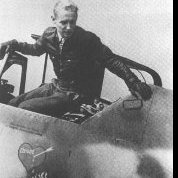
A6M2b, 1:32, Tamiya
Anthony in NZ and one other reacted to Hartmann52 for a topic
And little "family" foto:2 points -
Hello fellow modelers. I now embark on my 4th and final 1/18 scale mod project - an F4U Corsair. My past efforts have been a P-51D (Miss Velma), a P-38J (Lucky Lady), and a P-47D (Glen Eagleston's Eagle). You can find articles on the P-51 and P-38, and WIP and RFI posts on the P-47 on this site, if interested. All three took more than two years each, and I expect the Corsair will too. At least. Here are the customary "before" shots: Cool huh? I obtained this toy/model a few years ago along with the P-38 at a local hobby shop where a whole bunch of these large toys were donated by an estate. As you all probably know, these things are no longer manufactured. The manufacturer is Blue Box (probably originally 21st Century Toys). The date on this one is 2005. To my eye at the time, it looked realistic enough to be a good mod project. My plan is to greatly improve the following items: Engine (all new scratch build, including back section) Engine compartment including engine mount Cockpit Landing gear Gear bays Wing fold mechanisms Flaps Ailerons Elevators Rudder And there will be smaller projects as well too numerous to list, similar to what I did with the other aircraft, except even more ambitious. I hope my eyes are not bigger than my stomach here - it is entirely possible I run out of steam somewhere along the way, or not get up to speed at all. After all, I just finished the P-47. But I think not. I'll take my time and try not to put any pressure on myself (yeah right!). So when I sat down and really inspected this toy, I saw things I like, and things I don't like. As usual there are lots and lots of inaccuracies that are fixable - I expect that. Here is what I did not expect - I was very disappointed to see that the engine cowling is not correctly shaped. I mean it is deal breaker to me unless I can fix it. Here is what I mean: The engine cowling has a round cross-section just like it should. But it should also have a slight taper as shown in this side profile (drawing VS-33001): Can you see it? The taper is slight but noticeable (at least to my eye). Now look at the toy model: From the cowl flaps forward, this cowling has a constant cross-section. No taper at all until you get to the front end. This sticks out like a sore thumb, makes the nose look bulbous. So what to do. Well, this model is going to get a complete engine anyway, with removable cowl panels. So the cowl flaps and panels over the engine will be replaced anyway. The nose cowl must be salvaged (I know not how to make one). The fuselage aft of the cowl flaps is just fine shape-wise. The typical gage of the plastic is .08 inch - robust. After some research it turns out that if the nose cowl could be decreased in diameter by about .08 inch (.04 inch on the radius), and reshaped to blend out the shape, I would still have about .04 inch gage to work with on the nose cowl, and I would get the slight taper I want. Some of you know I own a small desktop lathe (a Unimat). So I decided to try to turn the cowling on the lathe. To do this, I had to lop off the cowling: I was thinking at this point if this blows up in my face, I will just not do this project at all. Here is the cowling on the lathe chuck: Ha! My lathe is intended to work with raw material no larger than about 2 inch diameter. This cowling is a bit over 3 inches diameter! I had to put a large spacer under the head stock mount (see it - its that silver spacer). I had to mount the cowling very carefully - no wobble allowed. Then I rotated the head stock about 2 deg and proceeded to turn material off the nose: Then I removed the nose cowl: Success - that worked way better than I thought. So I am off to the races. I guess the engine is going to be first on the list. The Corsair was powered by the Pratt & Whitney R-2800 double wasp, as was the P-47 Thunderbolt. For the P-47, I dedicated about 6 months of my life scratch building a R-2800. And it didn't include the aft section. This time, I intend to make use of 3D printing in some way. At the very least, the cylinders will be 3D printed. So perhaps it will not take so long and not be as tedious. Hope you can look in from time to time! See ya!1 point
-
Nice review, Kev! And those wheels look huge! They also look very nicely detailed and cast.1 point
-
The shape is fine. The distortions in the clear plastic are only noticeable if you get up real close and stare at them.1 point
-
Progress!!!!! And lots of it. Here we are at the point of being about ready to button up the fuselage. Normally that is a major step, but in the case of this F-104D, its a HUGE step because once its glued up, there will be NO coming back to fix anything if I have an issue with an MLED, or its attachment point. So here we go.............. I decided that the cold white light LED being used for the exhaust didn't look right, as well as looking like all the other lights in the set. I took a mix of Tamiya clear yellow with a bit of clear red and clear orange added til I was happy. I was in a debate with myself about weather to paint the LED bulb itself, or to paint the inside of the clear rod. After the previous near disaster with the clear tube cracking out like ice with a chemical reaction between it and several thinners I decided Id take a chance and paint the bulb itself: After some quick testing on how the clear rod fit around the bulb up inside the exhaust tube I decided it was time to spray some chrome enamel up inside the exhaust tube to reflect as much light as I could get down the clear tube. After that hardened off, I glued in the Brassin exhaust on the tube with some JB Weld as its going to bore the weight of most of the model. A quick test of how the LED looks installed in the newly glued and painted exhaust tube confirmed things...........I was a happy boy! So now that both the exhaust tube and rod were complete (save cutting the rod off at the base to make the final height of the model) I decided to see if any of the light and reflection work I just went to did any good or not. So took a small video. WE HAVE SUCCESS!!!! I have seriously considered implementing the suggestions of painting up the clear rod to possibly reflect after burner rings or what not, but with the previous near disasters fresh in my mind, I think Im going to call that idea off, as I dont even want to chance cracking or even remotely blemishing the surface of the rod since it really needs to stay crystal clear to maintain the effect I want. If I messed something up, Im not sure I could stomach buying a new one and drilling/cutting it all again. Now for the pièce de ré·sis·tance! The jam packed fuselage is ready to close up. You'll notice our observer/photographer is absent here, as I accidentally broke his seat off while gluing up the starboard rear of the cockpit. No damage done to him, but Im waiting till I close up the fuselage to put him back in, since his arm is near straight out, and no one wants a broken arm for our guy: The exhaust is all glued in on the starboard side, and exhaust LED wired up with lead wires under the batter compartment: Here's a look at where the magnetic door will go over the main mother board. Its cram CRAM packed in there! I honestly don't think I could have stuck one more set of mini wires through the connection holes I made in the bulkheads. Fortunately there are only 4 ground slots left, and 4 wires to hook up from the port side, then its completely full: Im about to go the final fit test/light bleed test/final run though before I glue up the halves of the fuse. Cheers and thanks for looking in on me!1 point
-

HK 1/32 B-17G 96th BG/337th BS
Out2gtcha reacted to Dennis7423 for a topic
Thanks for the kind feedback everyone! She went to her first show last weekend, and placed 1st place in her category (multi-engined, 1/48 and larger). I also got a request to possibly put her into a museum/restoration shop in Colorado that specializes in WWII restorations, which is really exciting! We'll see if it all works out. Now, where did I put that HK Lancaster Mk.I... - Dennis S. Thornton, CO USA1 point -
Looks good at 500%. Great! show. Sincerely, Mark1 point
-
Mistel Combo
Greg W reacted to Bruce_Crosby for a topic
And a bit more old rope! Some primer on the He-162 Untitled by Bruce Crosby, on Flick Blanks on the ejection ports under Me-262A Untitled by Bruce Crosby, on Flickr Making the hinge pin brackets for the struts. Untitled by Bruce Crosby, on Flickr That's them done then! Untitled by Bruce Crosby, on Flickr And on with the primer on the 262, I can already see some bits that need work. Untitled by Bruce Crosby, on Flickr A redesign of the Walter boosters, I found a pile of photos and rather than having you lot ripping the model apart, we decided to go ahead and correct them. So there! Untitled by Bruce Crosby, on Flickr Next job this evening is more smoothing with some Micro Mesh. So that's me gone. Regards, Bruce Crosby1 point


